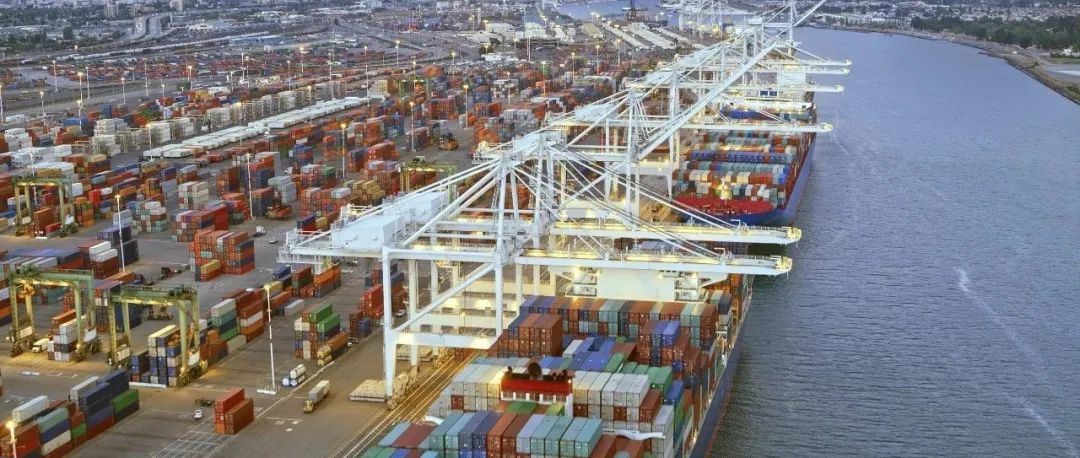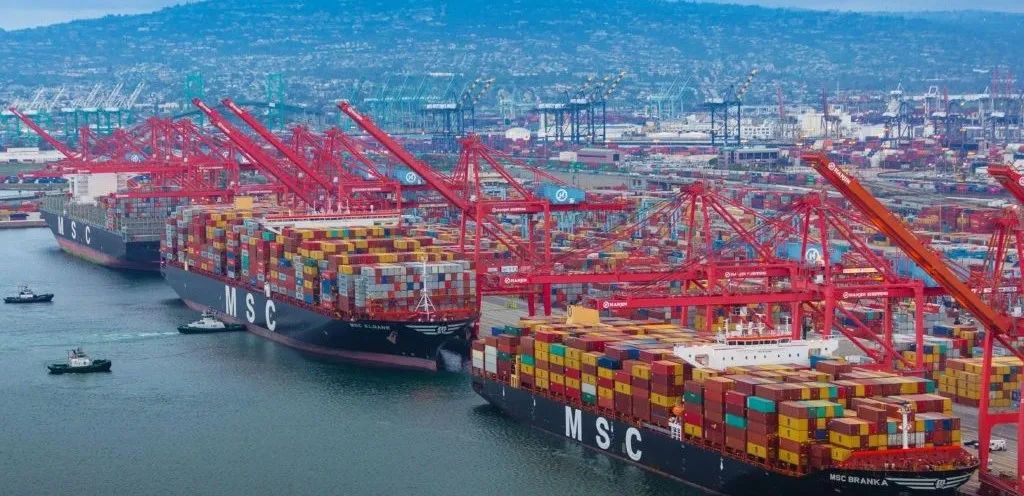Out of Control! Freight Rates Continue to Plummet Across the Board as East Coast Sees Further Sharp Decline
Recently, the United States has implemented reciprocal tariff policies with various countries, while global cargo volumes have yet to show a significant increase. Against this backdrop, the freight rate index has continued to decline, registering seven consecutive weeks of decreases. The latest Shanghai Containerized Freight Index (SCFI), released on the 25th, fell by 54.31 points to 1,592.59, a weekly drop of 3.3%. Among the major routes, rates for Europe remained flat, while the US East Coast saw a significant decline, and rates for the Mediterranean and US West Coast continued to decrease.
Meanwhile, China’s Containerized Freight Index (CCFI) also dropped by 3.2 points to 1261.35 points, with all four major routes to Europe and the United States experiencing slight declines. The US West Coast and US East Coast routes fell by 0.68% and 0.67% respectively, while the Mediterranean and Europe routes decreased by 0.05% and 0.15% respectively.

Previously, shipping companies had planned to raise prices on European and American routes on August 1st.However, the shipping giant Mediterranean Shipping Company (MSC) decided not to raise prices for the time being, causing the plan to be shelved. Maersk, ranked second, posted its latest West Coast U.S. quote for the first week of August at $1,675 per container, which decreased rather than increased. Industry insiders generally believe that a price hike is no longer possible.
Current freight rates on various routes:
West Coast US route: This week's freight rates are between 1700-1900 USD, approaching the cost price of many alliance shipping companies.
East Coast route: Freight rates remain at a highly profitable level of $3,200–3,400 per large container, but as cargo volume gradually declines, there is considerable downward pressure on rates.
Europe route: Supported by the congestion at the port of Suez, the freight rate for a 40-foot container remains around 3200-3400 USD.
Multiple freight forwarders indicate that the current shipping market is experiencing a calm before the storm of tariffs.Most U.S. importers completed their stockpiling before the tariff suspension period, and recent cargo volumes have started to decrease. This week, the volume of shipments on the U.S. route dropped by about 10-20%, increasing downward pressure on freight rates.Trump hinted that the tariff threshold will be raised to 15%, further deepening market concerns that weak demand will affect shipment volumes. The shipping industry remains on high alert.
Since most importers have already completed their stockpiling, even if China and the United States reach a tariff trade agreement, it is difficult to stimulate a new round of demand in the short term.As tariff policies in various countries become increasingly clear, U.S.-bound shippers no longer need to rush shipments. Instead, they will observe the actual increase in effective tariff rates, the impact on import prices and the economy, as well as the effects of Asian currency appreciation and U.S. dollar depreciation, carefully considering their future shipping plans.

To prevent freight rates from falling, shipping companies have begun to significantly reduce trans-Pacific capacity. According to industry sources, it is estimated that at least 175,000 TEU of capacity has been canceled, accounting for 11% of the deployed capacity on the US West Coast routes, higher than 9% in June. Most of the canceled services are related to ports in southern China and transshipment ports in Southeast Asia.
A major freight forwarder is optimistic in their forecast, noting that most reciprocal tariffs from key exporting countries have been finalized. It is expected that cargo volume will increase around mid-August, which may lead to a rise in freight rates. However, the shipping market still faces many uncertainties, and the subsequent trend requires further observation.
【Copyright and Disclaimer】The above information is collected and organized by PlastMatch. The copyright belongs to the original author. This article is reprinted for the purpose of providing more information, and it does not imply that PlastMatch endorses the views expressed in the article or guarantees its accuracy. If there are any errors in the source attribution or if your legitimate rights have been infringed, please contact us, and we will promptly correct or remove the content. If other media, websites, or individuals use the aforementioned content, they must clearly indicate the original source and origin of the work and assume legal responsibility on their own.
Most Popular
-

List Released! Mexico Announces 50% Tariff On 1,371 China Product Categories
-

Nissan Cuts Production of New Leaf EV in Half Due to Battery Shortage
-

New Breakthrough in Domestic Adiponitrile! Observing the Rise of China's Nylon Industry Chain from Tianchen Qixiang's Production
-

Dow, Wanhua, Huntsman Intensively Raise Prices! Who Controls the Global MDI Prices?
-

Mexico officially imposes tariffs on 1,400 chinese products, with rates up to 50%






